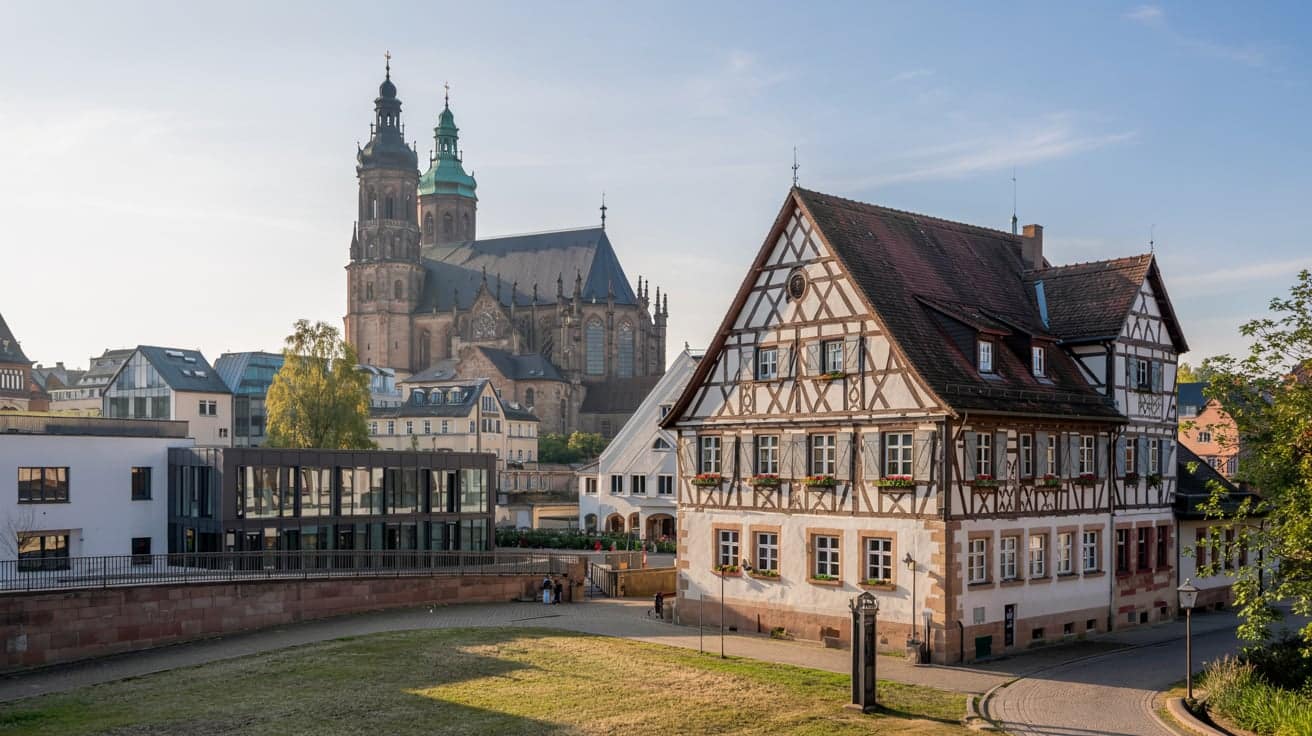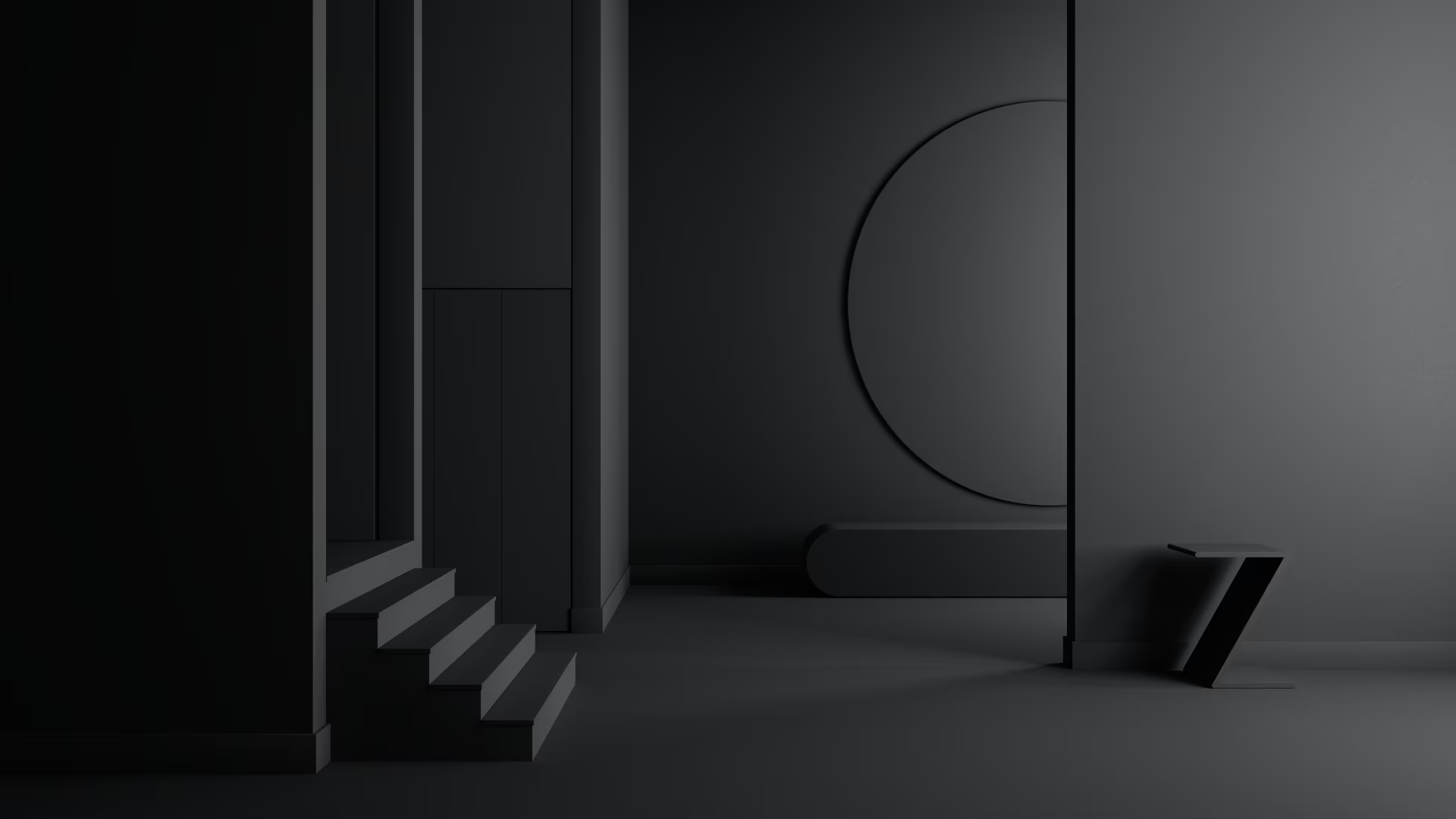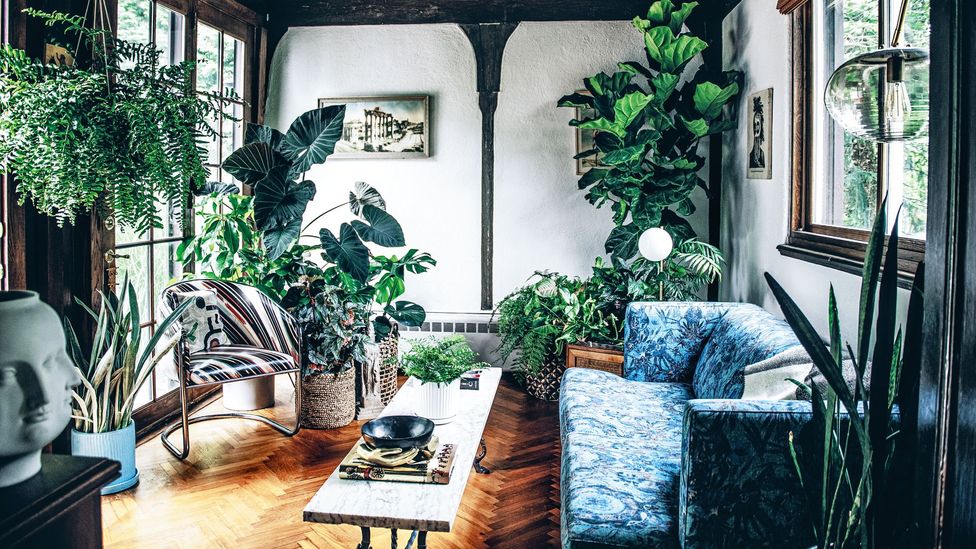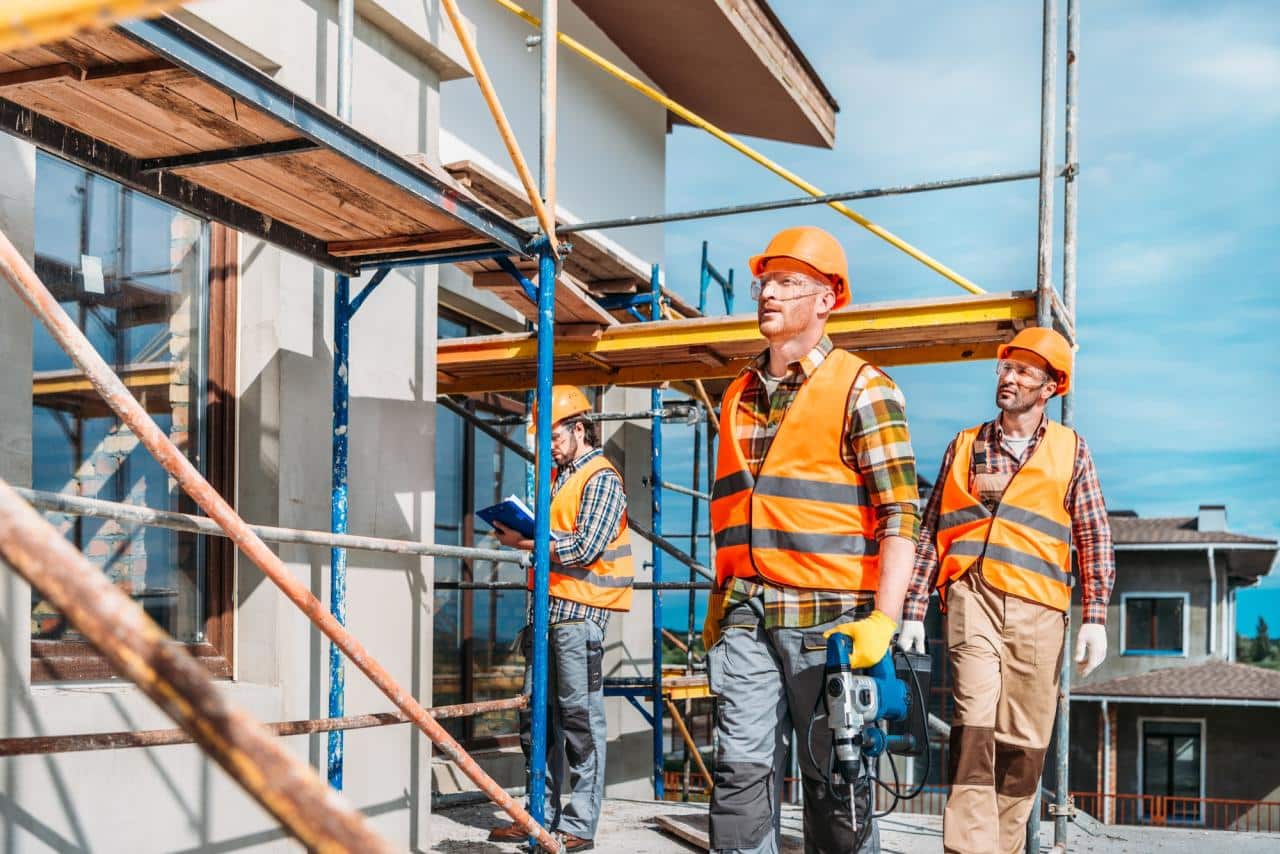Traditional German Architecture: Key Styles
Germany’s rich architectural history showcases a mix of traditional and modern designs that have shaped its cities and landscapes.
From medieval castles to Baroque palaces, traditional German architecture tells the story of the country’s culture and evolution.
In this blog, we’ll explore the history, regional styles, notable examples, and modern influences of German architecture.
Giving you a deeper understanding of its lasting impact and the efforts to preserve and restore these architectural treasures.
What is Traditional German Architecture?
Traditional German architecture refers to the design and construction of buildings that reflect Germany’s history, culture, and climate.
These architectural styles evolved over centuries, influenced by regional customs, geography, and the materials available.
From medieval half-timbered houses to grand baroque palaces, traditional German architecture showcases a variety of practical designs while emphasizing beauty and craftsmanship.
The origins of German architecture can be traced back to the early medieval period, where Romanesque styles influenced the design of churches and castles.
Over time, styles such as Gothic, Renaissance, and Baroque became popular, each contributing to the distinct look of German buildings.
Today, traditional German architecture continues to be admired and preserved, with some regions maintaining their historic buildings while others blend the old with the new.
Key Architectural Styles in Traditional German Architecture
Traditional German architecture features several key styles, each with unique characteristics. These styles reflect the country’s history, culture, and regional diversity.
1. Half-Timbered Houses (Fachwerkhäuser)
Half-timbered houses, or Fachwerkhäuser, are one of the most iconic architectural styles in Germany.
These buildings are characterized by exposed wooden beams with brick or plaster filling the gaps between them.
The wooden frame is often painted in dark colors, creating a contrast with the light-colored walls.
These houses have significant historical and cultural value, especially in rural areas. They were designed to withstand the climate, and their steep roofs help shed snow.
Famous examples can be found in towns like Rothenburg ob der Tauber, where these buildings continue to charm visitors with their old-world appeal.
2. Bavarian Vernacular Architecture
Bavarian vernacular architecture is a traditional style found mainly in Bavaria. Buildings in this style are simple yet sturdy, designed to fit the rural landscape.
They often have a practical, no-frills appearance, with steep roofs and large overhangs to protect from the elements.
The style reflects the Bavarian culture and climate, with homes built to withstand cold winters and heavy snowfall. Traditional materials used include wood, stone, and clay.
This style is deeply connected to the region’s agricultural lifestyle and is often seen in farmhouses and rural cottages.
3. Romanesque and Gothic Influences
Romanesque and Gothic styles had a major impact on German architecture, particularly in religious structures.
Romanesque architecture is known for its rounded arches, thick walls, and small windows. Gothic architecture, on the other hand, is recognized for its pointed arches, flying buttresses, and large stained-glass windows.
Famous Gothic buildings in Germany include the Cologne Cathedral and Mainz Cathedral, which are known for their stunning architecture and historical significance.
These styles emphasized verticality and light, creating awe-inspiring spaces in churches and cathedrals.
4. Baroque Architecture
Baroque architecture in Germany is known for its dramatic, ornate designs.
Buildings from this period often feature grand facades, intricate details, and expansive interiors. The style was used for palaces, churches, and government buildings.
Notable examples of Baroque architecture in Germany include the Residenz Palace in Munich and the Würzburg Residence.
These buildings are designed to impress, showcasing wealth and power while maintaining functional spaces for daily life. Baroque design emphasizes both beauty and utility.
Key Elements of Traditional German Architecture
Certain elements are key to understanding traditional German architecture. These include materials, roof designs, and the design of windows and doors, each contributing to the overall design and function of buildings.
Materials Used in German Architecture
Traditional German buildings use a variety of materials, with timber, brick, stone, and slate being the most common.
Wood was widely used, especially for half-timbered houses, while stone and brick were often used for more durable structures like castles and churches.
The materials used often depended on the region. For example, slate is common in the Rhineland, while Bavarian houses may feature timber and stone.
Regional variations help give German architecture its diverse yet unified character.
Roof Designs
Roof designs in traditional German architecture are often steep and gabled, which helps with the heavy snowfall typical in many parts of Germany.
These roofs are not just aesthetic but functional, designed to shed snow and protect buildings from the elements.
In rural areas, thatch roofs were also used. These roofs were made from straw or reed, providing excellent insulation. Though less common today, they still appear in traditional farmhouses.
Windows and Doors
Windows and doors in traditional German architecture have both practical and aesthetic functions.
Window shutters are often used to protect from the weather and also work as decorative features. In many buildings, shutters are painted in bright colors, adding a unique charm.
Doors are typically made of wood and feature intricate carvings or metalwork. In Germany, the design of doors often emphasizes the welcoming nature of homes, with large entryways that open to courtyards or gardens.
Notable Examples of Traditional German Architecture
These buildings showcase different styles, from Gothic to Baroque to half-timbered houses. They are symbols of Germany’s rich history and cultural pride.
1. Neuschwanstein Castle
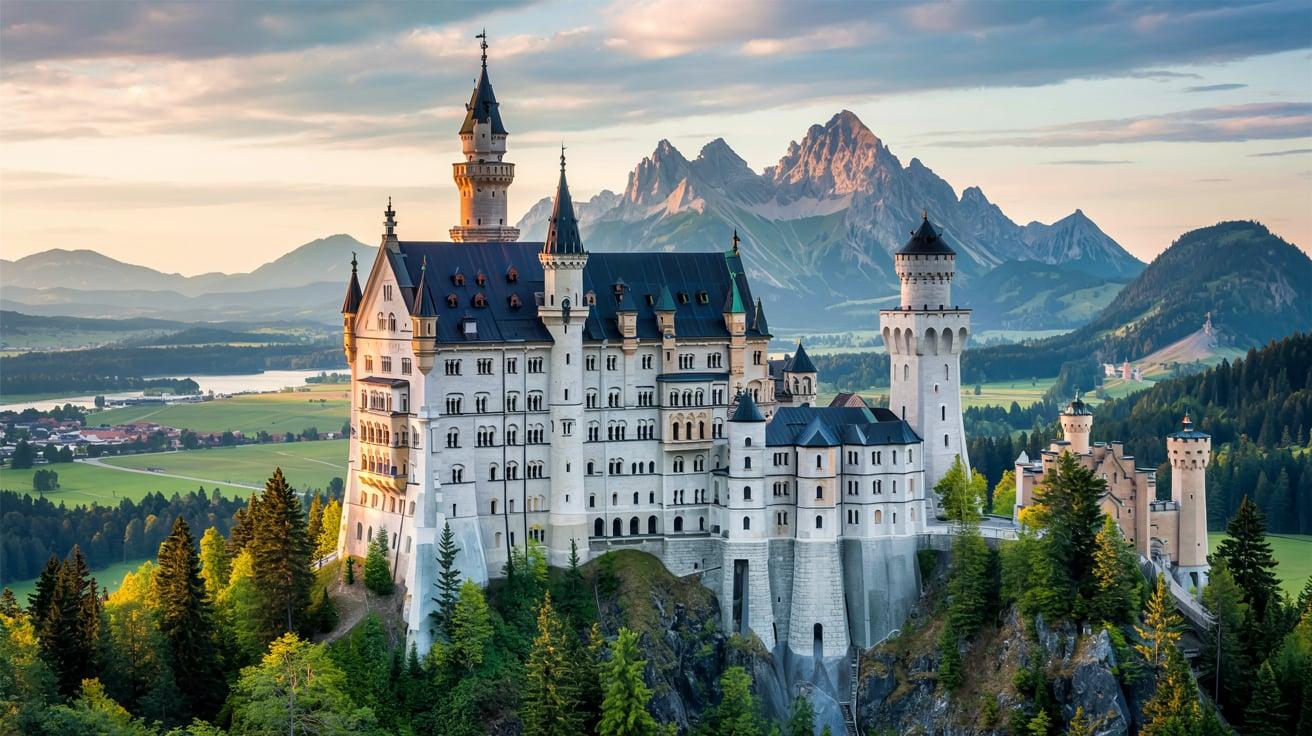
Neuschwanstein Castle sits on a rocky hill in Bavaria, built between 1869 and 1886 for King Ludwig II. This castle blends medieval style with 19th-century romanticism, featuring tall towers and white limestone walls.
Inside, rooms showcase scenes from German myths and Wagner’s operas. The throne room has a mosaic floor with over 2 million stones.
Though it looks ancient, the castle had modern features like central heating, running water, and telephones. Ludwig lived in it for only 172 days before his death.
Today, over 1.4 million people visit it yearly, making it one of Germany’s most photographed buildings.
2. Cologne Cathedral
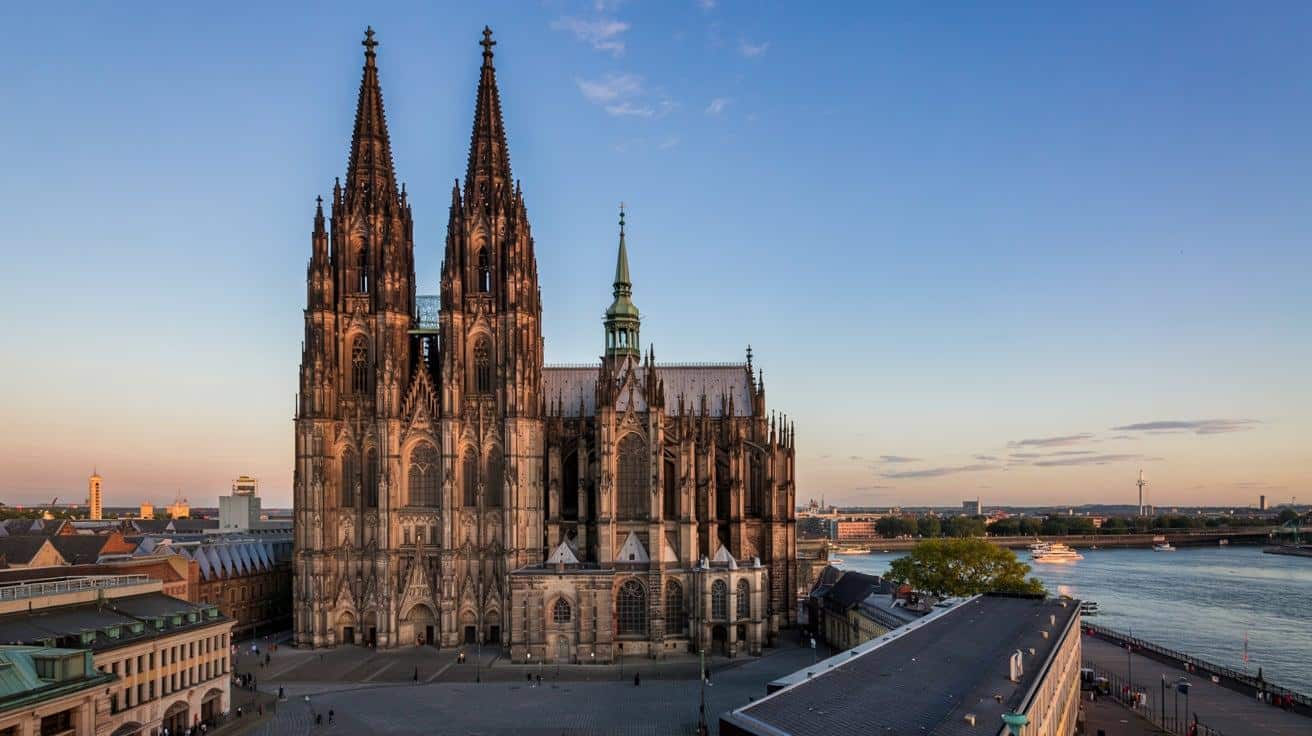
Cologne Cathedral took over 600 years to build (1248-1880), standing as Germany’s largest Gothic church. Its twin spires reach 157 meters high, making it the tallest twin-spired church in the world.
The cathedral houses the Shrine of the Three Kings, said to contain the remains of the biblical Magi. Its stained glass windows cover 10,000 square meters, with the oldest dating from 1260.
The massive structure survived World War II bombing while much of the city was destroyed. UNESCO added it to the World Heritage list in 1996.
The cathedral remains a working church with daily services and draws about 20,000 visitors each day.
3. Heidelberg Castle
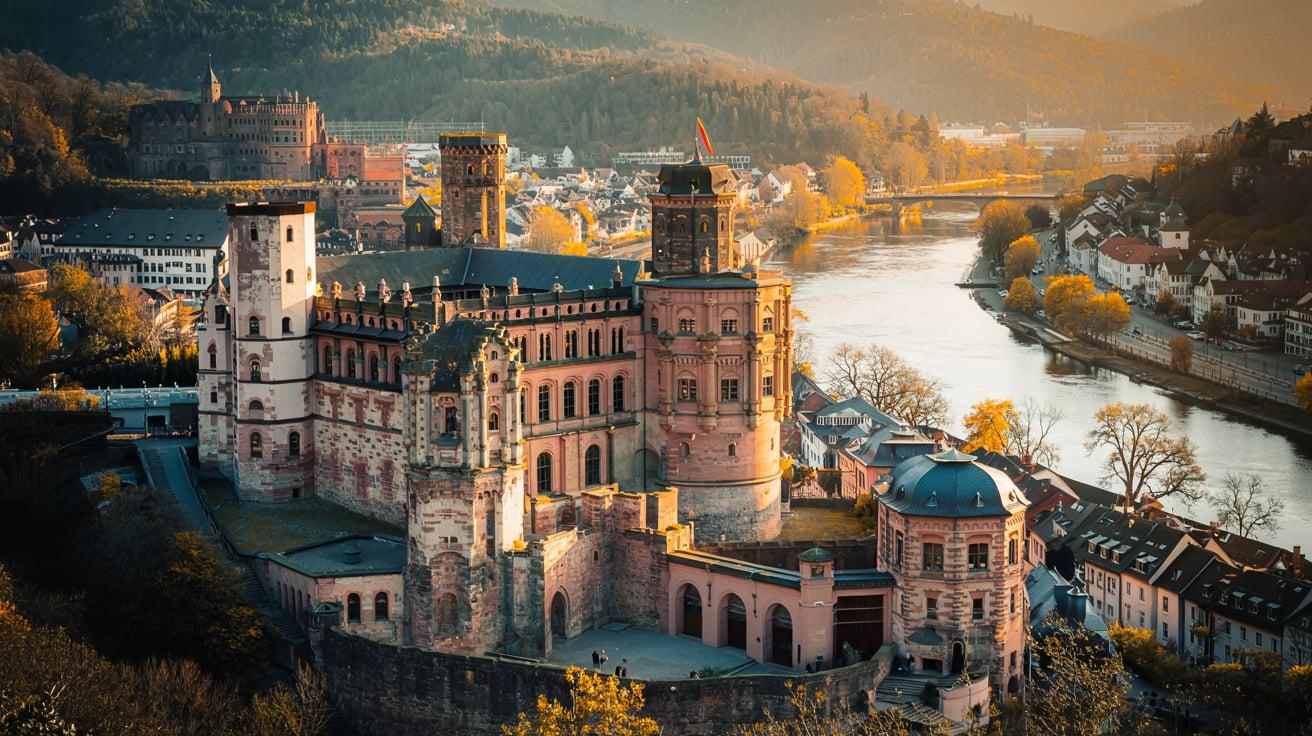
Heidelberg Castle combines Gothic and Renaissance styles on a hillside overlooking the Neckar River. Built in stages from the 13th to 17th centuries, it served as home to the Palatinate rulers.
Lightning, wars, and fires damaged the castle, leaving parts in ruins. Its Great Barrel in the cellar holds 219,000 liters of wine and has a dance floor on top.
The Friedrich Building, with its detailed sculptures, shows fine Renaissance craftsmanship. The castle gardens offer views of the old town below.
These ruins became famous during the Romantic period when artists and writers came to paint and describe them, helping create Germany’s first major tourist attraction.
4. Dresden’s Zwinger Palace
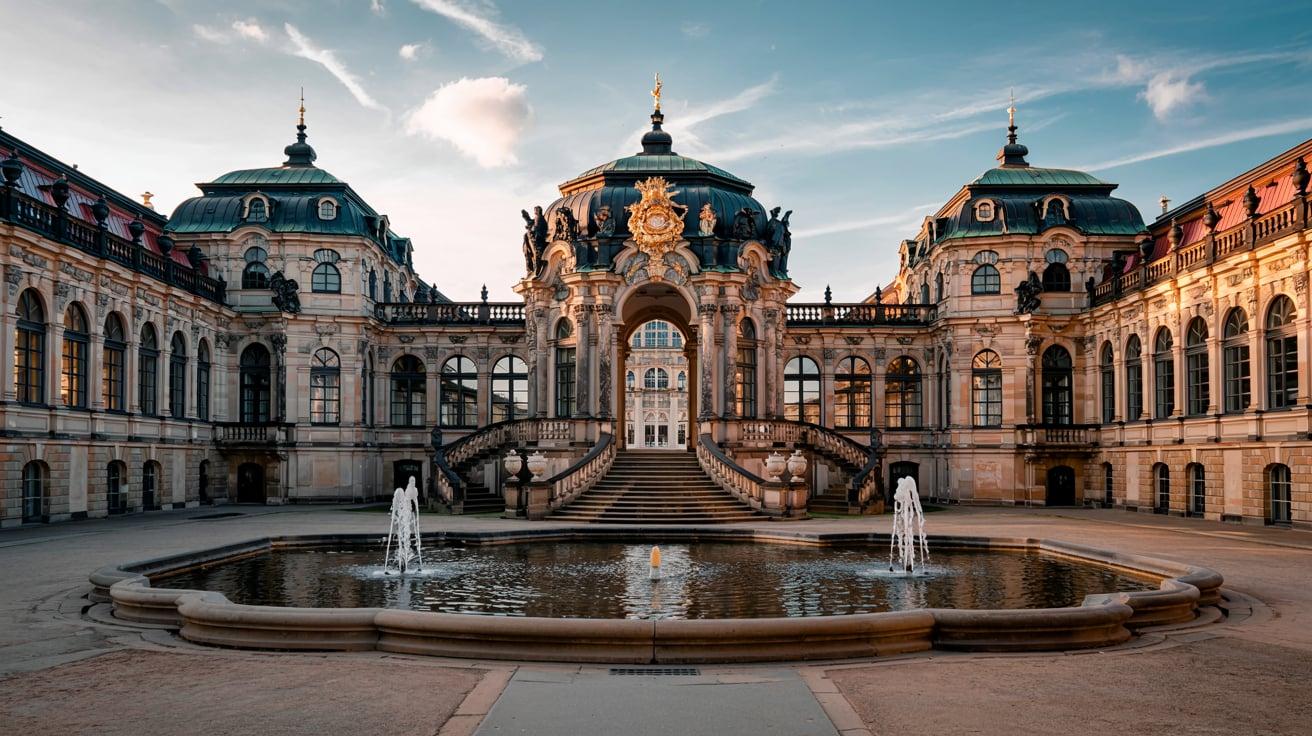
The Zwinger Palace in Dresden was built between 1710 and 1728 under Augustus the Strong, ruler of Saxony. This Baroque complex features pavilions connected by galleries around an open courtyard.
The Crown Gate entrance has curved stairs and golden ornaments. Inside the courtyard, fountains with water nymphs and other figures create a garden atmosphere.
The building now houses museums with porcelain collections and scientific instruments. Much of the Zwinger was destroyed in 1945 during World War II but was carefully rebuilt.
The Nymphenbad fountain area, with its shell-shaped cascades and Bath of Nymphs, makes the Zwinger a popular spot for both tourists and locals.
5. Bamberg’s Historic Old Town
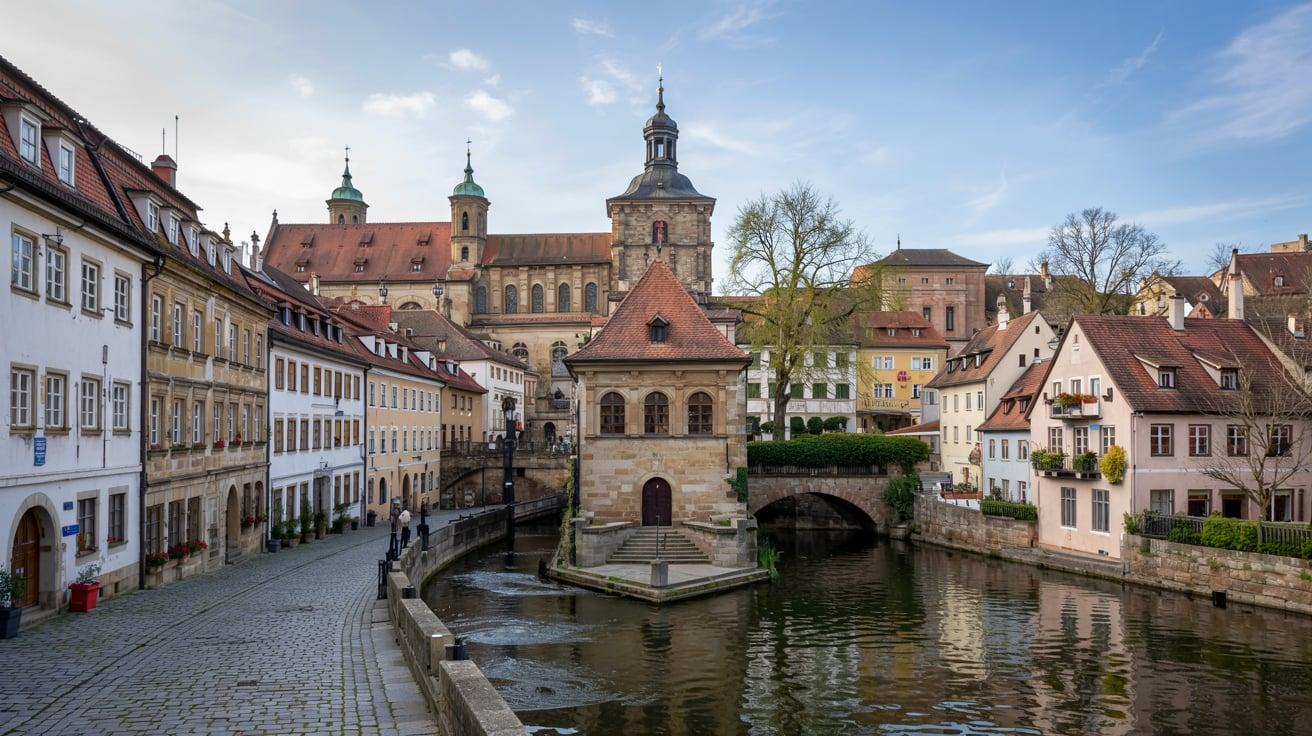
Bamberg’s Old Town survived World War II mostly intact, preserving 1,000 years of building history. The town spans seven hills, each topped with a church, earning it the nickname “Franconian Rome.”
Its layout shows how medieval town planning worked, with distinct areas for the church, nobility, and common people.
The Old Town Hall sits on an artificial island in the Regnitz River, built when the bishop refused to give citizens land. Narrow streets lined with half-timbered houses lead to the Imperial Cathedral, which has four towers.
“Little Venice” features former fishermen’s houses directly on the water. In 1993, UNESCO recognized the entire Old Town as a World Heritage Site.
Regional Differences in German Architecture
German Architecture is an interesting blend of styles that reflects the country’s rich history and diverse regions.
Bavarian Architecture
Bavarian architecture shows strong Alpine influences. Houses often have wide, overhanging roofs to handle heavy snow and rain.
Wooden elements play a key role, with carved balconies and painted facades called “Lüftlmalerei” showing local scenes or religious figures.
Churches like the Wieskirche feature rounded domes and bright interiors. The famous Neuschwanstein Castle combines medieval styles with fantasy elements.
Rural homes typically have flower boxes on windows and exposed wooden beams. This style is closely connected to the mountain landscape and local building materials.
Northern German Brick Architecture
Northern Germany’s flat lands lack natural stone, so brick became the main building material.
The Backsteingotik (Brick Gothic) style spread through Hanseatic trading cities like Lübeck, Wismar, and Stralsund.
These cities built tall churches, city gates, and town halls using dark red bricks in complex patterns.
St. Mary’s Church in Lübeck shows how builders created pointed arches and high vaults using only brick. City walls, warehouses, and merchant homes all used this practical material.
The style features decorative elements like glazed bricks in different colors and stepped gables on building fronts.
Frankish and Swabian Styles
Franconia and Swabia developed distinct building approaches. Franconian towns like Rothenburg and Bamberg feature homes with steeply pitched roofs and half-timbered upper floors.
Natural limestone became a common material due to local quarries. Swabian architecture includes the “Swabian Hall” style house with central entrances and symmetrical designs.
Both areas built modest town centers with practical market halls and fountains. Windows tend to be smaller than in southern Bavaria, and buildings cluster closely together for warmth.
Churches use simple stone construction with limited decoration, focusing on solid craftsmanship rather than showy details.
Role of Traditional German Architecture in Today’s Society
Traditional German architecture plays an important role in today’s society by connecting people to their cultural heritage.
Cultural Significance
- Traditional German architecture is closely tied to Germany’s cultural identity.
- Iconic structures, like half-timbered houses and castles, reflect the country’s rich history and craftsmanship.
- These buildings express national pride and regional diversity.
- Preserving this architecture helps maintain a connection to the past.
- It ensures that Germany’s architectural heritage remains alive for future generations.
Preservation and Restoration
- Preserving and restoring traditional German buildings is key to maintaining cultural heritage.
- Efforts such as restoring the Dresden Frauenkirche ensure historical craftsmanship isn’t lost.
- Restoration combines modern techniques with traditional methods to preserve the essence of these structures.
- This process makes historic buildings functional for future use while retaining their historical significance.
Influence on Global Architecture
- Traditional German architectural elements, like half-timbered houses and steep gabled roofs, have influenced global design.
- These elements spread through Europe and overseas, especially where Germans settled.
- The focus on sustainability and natural materials in German architecture impacts modern designs.
- Traditional German architecture continues to inspire innovative projects worldwide, blending history with contemporary needs.
Modern Influences on Traditional German Architecture
Modern designs have mixed with traditional German architecture, combining old and new styles. Today’s buildings use new materials and technology but still keep the charm of traditional designs.
Post-War Architecture
After WWII, heavily bombed German cities were rebuilt using traditional styles alongside modern materials. The aim was to restore cultural identity and history while ensuring functionality.
Many towns used familiar elements like steep roofs and timber framing, blending them with new technologies to address housing needs while preserving historical aesthetics.
Contemporary Architecture with Traditional Elements
Modern German architects blend traditional design with contemporary materials, creating a seamless connection between the old and new.
Features like timber framing and steep roofs are often used in modern designs. These can be found in public buildings and residential homes.
They honor Germany’s architectural past while meeting the needs of contemporary living.
Conclusion
Traditional German architecture offers a unique glimpse into the country’s history, culture, and regional diversity. From the early Romanesque styles to the grandeur of Baroque and Rococo, each era left its mark.
Modern influences continue to shape the architecture, blending the old with the new.
Preserving and understanding these structures helps maintain a connection to Germany’s past while guiding future developments.
This blog highlighted the importance of traditional designs and how they continue to inspire modern architecture both in Germany and around the world.
Interested in learning more about architecture and design? Check out our other blogs for more tips, ideas, and inspiration.

